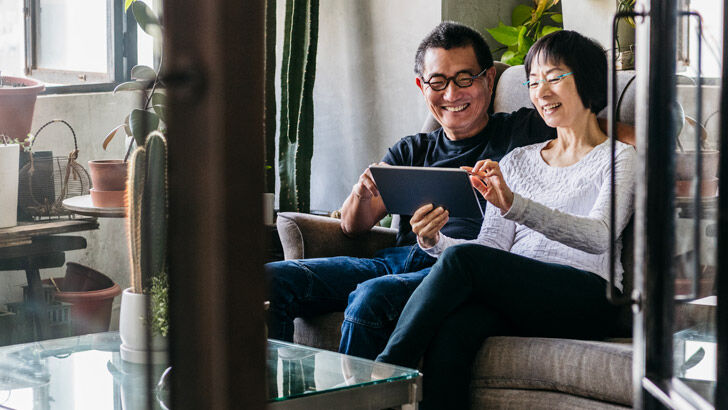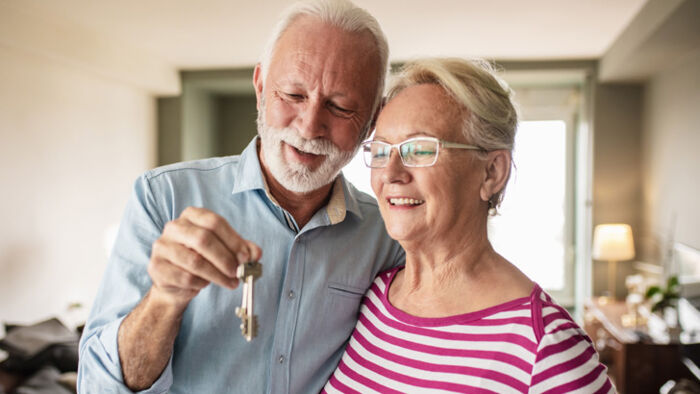Your guide to downsizing your home
By Susan Hely
Selling up the family home can make sense when you are older. You may be rattling around in a big house, once needed for a growing family who have long moved on.
If you move to a cheaper, more compact home or to a "cheaper" area, you can unlock some extra funds for the retirement years. It can be rewarding and liberating to sell your safe-haven home and free up some cash to have options such as exploring the world.
There are even tax advantages if you put a downsizer contribution into your superannuation fund.
Of the quarter of Australians who are over 55 and downsize their homes, 27% do it for financial reasons while 27% do it for lifestyle. A further 18% say the maintenance of the garden and house became overwhelming and was the main consideration for selling, while 4% cash in their home to help their family, according to the Australian Housing and Urban Research Institute (AHURI).
But selling the family home needs to be carefully thought out. Almost 30% of people over 55 consider downsizing but don't, the AHURI found.
There is a lot to weigh up before you sell, says Mark McShane, director of Chrysalis Lifestyle Planning. He recommends researching all the costs and being clear about what you want to achieve.
"People underestimate the costs such as stamp duty, agent's fees and getting the house ready for sale. That's when you have to really sit down and work out what do you want to do in life, where
you want to go - all the quality stuff," says McShane.
Smaller may not be cheaper
If you downsize and aim to live in the same area, be careful that you aren't caught out financially. Often buying a smaller, more modern place can be as costly as your big family home. Only 22% of downsizers stay in the same area, according to the AHURI.
If you sell in the city and try a tree or sea change, it can be hard to farewell friends, neighbours and supportive networks, such as the local doctor and allied health services. It can be a huge emotional wrench.
You need to do your homework on what services, particularly health and hospitals, are available in your new destination. Just because you are in good health now doesn't mean you won't need a wide range of medical help down the track.
Your dream to move north for warmer winters could be impacted by higher prices for regional and coastal properties that took off during Covid and the wave of working from home. Some experts, such as McShane, believe you should rent out your home - or, if you can afford it, leave it vacant - and then rent in the new area before you buy to see if you like it there.
After all, Tasmanian winters could be too cold for you. Or it may be hard to find like-minded people in certain towns and you're better off returning to where you know best.
Do the sums and avoid a 'fatal mistake'
When people sell their house and buy another to unlock money, they can sometimes underestimate the expenses involved. There is a long list of costs, including conveyancing, marketing, real estate agent's fees, stamp duty and the removalist.
Sprucing up your house to sell can be costly. Will you paint it, or pay for styling by a professional? Then how much will you spend on upgrading your new home?
The outcome depends on the value of the house and your equity in it. While buying before you sell may make sense when prices are rising strongly, it can be problematic in a volatile housing market.
Take Paul and Catherine, who lived about 20 kilometres from the centre of Melbourne in a five-bedroom, three-bathroom home with a large garden. They liked having a large house for when their adult children and grandchildren visited, but in their early 70s they decided to downsize and move closer to the centre of Melbourne. "We made a fatal mistake of buying before we had sold our home," says Catherine.
The new house was more modern with a small garden and three bedrooms and bathrooms for visitors. They believed they would receive around $1.8 million for their old home, so paid $1.8 million for the new one.
To their shock, it took 10 months to sell their house. "It was such a stressful time. The house inspections didn't attract many people and we had to keep our house and garden looking perfect for 10 months until it finally sold," says Catherine.
After settling on the new house, they camped out in it, so they didn't have to constantly prepare for two house inspections a week.
They paid $10,000 a month in bridging finance, which ate into their superannuation. They lowered the price of their old home several times and eventually accepted $240,000 less than their asking price.
"We do love our new home, but it was a saga," says Catherine. They have spent around $60,000 on new furniture, upgrading cupboards and landscaping the small garden.

Parents' clutter can be a nightmare
It can be overwhelming selling your parents' home if they have unexpectedly ended up in aged care due to an accident or ill health. I have friends who have taken months, even years, to sort through the contents, particularly if their parents are "collectors" or hoarders.
Others, like my partner and his three siblings, efficiently go through their parents' home over a couple of days, with much of the contents ending up in the skip or donated.
While his siblings agreed with emptying the house, some families could benefit from employing a professional declutterer who can help you efficiently sort the contents into piles for keeping, selling or throwing out.
Some family members want to sell every item in the home to maximise the value of the estate. But you need to be realistic about how much the contents are worth.
Often there is no market for brown furniture of certain years - even once-expensive antiques. If there are some valuable items, do your research about the sale price or engage a valuer (for a fee) to tell you what can be sold.
Extra cash can be used to top up super
The downsizer contribution was introduced by the federal government in 2018, and 58,000 people have taken advantage of it, contributing a total of $14.5 billion to their superannuation (by April 2023), according to the tax office.
The concession lets eligible, single people deposit up to $300,000 directly into their super when they sell their home. It is double that for a couple.
The advantage of putting the money into superannuation is that any income earned after age 60 is tax-free in the account-based pension phase.
"You want to get money into the tax structure of superannuation because it's tax-free for pensions paid up at age 60. Superannuation is a very tax-efficient way to draw down money over time,"
says Chrysalis' Mark McShane.
Eligibility for the downsizer contribution has been relaxed over the years. It was initially only for homeowners aged 65 and over, but the bar has gradually been lowered over the years to 55 from January 1 this year.
To qualify, your home must be in Australia and have been owned by you or your spouse for at least 10 years. It must be exempt or partially exempt from capital gains tax.
Also, you must make the contribution within 90 days of receiving the money from the sale.
But be careful if you plan to receive the age pension or part pension. Cashing in on the family home and putting the proceeds into your super could make you ineligible because of the means test.
To receive the full age pension, single people need to have less than $301,750 in superannuation and other assets (car and home contents) to qualify. A couple with less than $451,500 in superannuation and other assets can receive the full age pension.
But if you put the $300,000 (single) or $600,000 (couple) into superannuation or keep it outside super, the amount of part age pension falls away sharply because of the taper rate. Beyond the asset requirements for the full pension, retirees lose $3 a fortnight for every $1000 above the thresholds of $301,750 and $451,500. That is $78 a year or 7.8% of the incremental assets.
Get stories like this in our newsletters.



